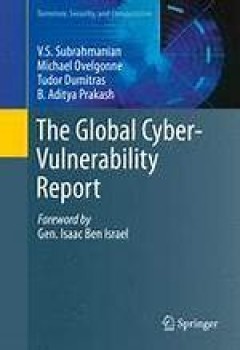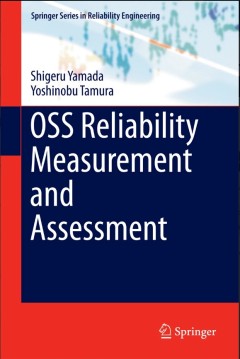Filter by

Security in an Interconnected World : A Strategic Vision for Defence Policy
This open access book follows the idea that security policy must be based on strategic analysis. Defence policy and the role of the armed forces can subsequently be determined on the grounds of said analysis. More than ever, internal and external security, and developments both in the Netherlands and abroad are interconnected. The world order is shifting, the cooperation within NATO and the EU …
- Edition
- 1
- ISBN/ISSN
- 9783030376062
- Collation
- X, 183 hlm,: ill, lamp;
- Series Title
- -
- Call Number
- -

Security of Ubiquitous Computing Systems
The chapters in this open access book arise out of the EU Cost Action project Cryptacus, the objective of which was to improve and adapt existent cryptanalysis methodologies and tools to the ubiquitous computing framework. The cryptanalysis implemented lies along four axes: cryptographic models, cryptanalysis of building blocks, hardware and software security engineering, and security assessmen…
- Edition
- 1
- ISBN/ISSN
- 9783030105914
- Collation
- XVIII, 265 hlm,: ill, lamp;
- Series Title
- -
- Call Number
- -

Handbook of Military Sciences
This open access handbook is a major reference work in the field of Military Sciences. Its main purpose is to inform and enlighten those dealing with the military on the role and contributions of science in describing, understanding and explaining military life, knowledge and doings. The handbook provides a comprehensive thematic introduction to various sub-fields of Military Sciences. The …
- Edition
- 1
- ISBN/ISSN
- 9783030028664
- Collation
- -
- Series Title
- -
- Call Number
- -

Engineering Safe and Secure Cyber-Physical Systems the Specification Pearl A…
This book introduces the concept of holistic design and development of cyber physical systems to achieve their safe and secure operation. It shows that by following the standards for embedded system’s safety and using appropriate hardware and software components inherently safe system’s architectures can be devised and certified. While the standards already enable testing and certification…
- Edition
- -
- ISBN/ISSN
- 978-3-319-28905-2
- Collation
- 28 b/w illustrations
- Series Title
- -
- Call Number
- -

Why Cryptography Should Not Rely on Physical Attack Complexity
This book presents two practical physical attacks. It shows how attackers can reveal the secret key of symmetric as well as asymmetric cryptographic algorithms based on these attacks, and presents countermeasures on the software and the hardware level that can help to prevent them in the future. Though their theory has been known for several years now, since neither attack has yet been successf…
- Edition
- -
- ISBN/ISSN
- 978-981-287-787-1
- Collation
- -
- Series Title
- -
- Call Number
- -

Energy Security and Development the Global Context and Indian Perspectives
This volume provides a systematic framework for energy suppliers, policy makers, academics, students, and all others interested in energy security, and analyzes key issues concerning energy, security and sustainability with the help of a wealth of data. While sustainability is the broadest objective, energy security is an important part of it, at the global, national and societal levels. The de…
- Edition
- 1
- ISBN/ISSN
- 978-81-322-2065-7
- Collation
- 117 b/w illustrations
- Series Title
- -
- Call Number
- -

VoIP and PBX Security and Forensics A Practical Approach
This book begins with an introduction to PBXs (Private Branch Exchanges) and the scene, statistics and involved actors. It discusses confidentiality, integrity and availability threats in PBXs. The author examines the threats and the technical background as well as security and forensics involving PBXs. The purpose of this book is to raise user awareness in regards to security and privacy threa…
- Edition
- -
- ISBN/ISSN
- 978-3-319-29721-7
- Collation
- -
- Series Title
- -
- Call Number
- -

Enterprise Risk Management in International Construction Operations
This book provides readers an understanding of the implementation of Enterprise Risk Management (ERM) for international construction operations. In an extended case study, it primarily focuses on Chinese construction firms (CCFs) based in Singapore. In this regard, the book explains the differences and similarities between Risk Management (RM), Project Risk Management (PRM) and ERM in the const…
- Edition
- -
- ISBN/ISSN
- 978-981-287-549-5
- Collation
- 31 b/w illustrations, 32 illustrations in colour
- Series Title
- -
- Call Number
- -

The Global Cyber-Vulnerability Report
This is the first book that uses cyber-vulnerability data to explore the vulnerability of over four million machines per year, covering a two-year period as reported by Symantec. Analyzing more than 20 billion telemetry reports comprising malware and binary reputation reports, this book quantifies the cyber-vulnerability of 44 countries for which at least 500 hosts were monitored. Chapters…
- Edition
- 1
- ISBN/ISSN
- 978-3-319-25760-0
- Collation
- XII, 296, 1 b/w illustrations, 398 illustrations in colour
- Series Title
- Terrorism, Security, and Computation
- Call Number
- -

OSS Reliability Measurement and Assessment
This book analyses quantitative open source software (OSS) reliability assessment and its applications, focusing on three major topic areas: the Fundamentals of OSS Quality/Reliability Measurement and Assessment; the Practical Applications of OSS Reliability Modelling; and Recent Developments in OSS Reliability Modelling. Offering an ideal reference guide for graduate students and researchers …
- Edition
- 1
- ISBN/ISSN
- 978-3-319-31817-2
- Collation
- X, 185
- Series Title
- Springer Series in Reliability Engineering
- Call Number
- -
 Computer Science, Information & General Works
Computer Science, Information & General Works  Philosophy & Psychology
Philosophy & Psychology  Religion
Religion  Social Sciences
Social Sciences  Language
Language  Pure Science
Pure Science  Applied Sciences
Applied Sciences  Art & Recreation
Art & Recreation  Literature
Literature  History & Geography
History & Geography